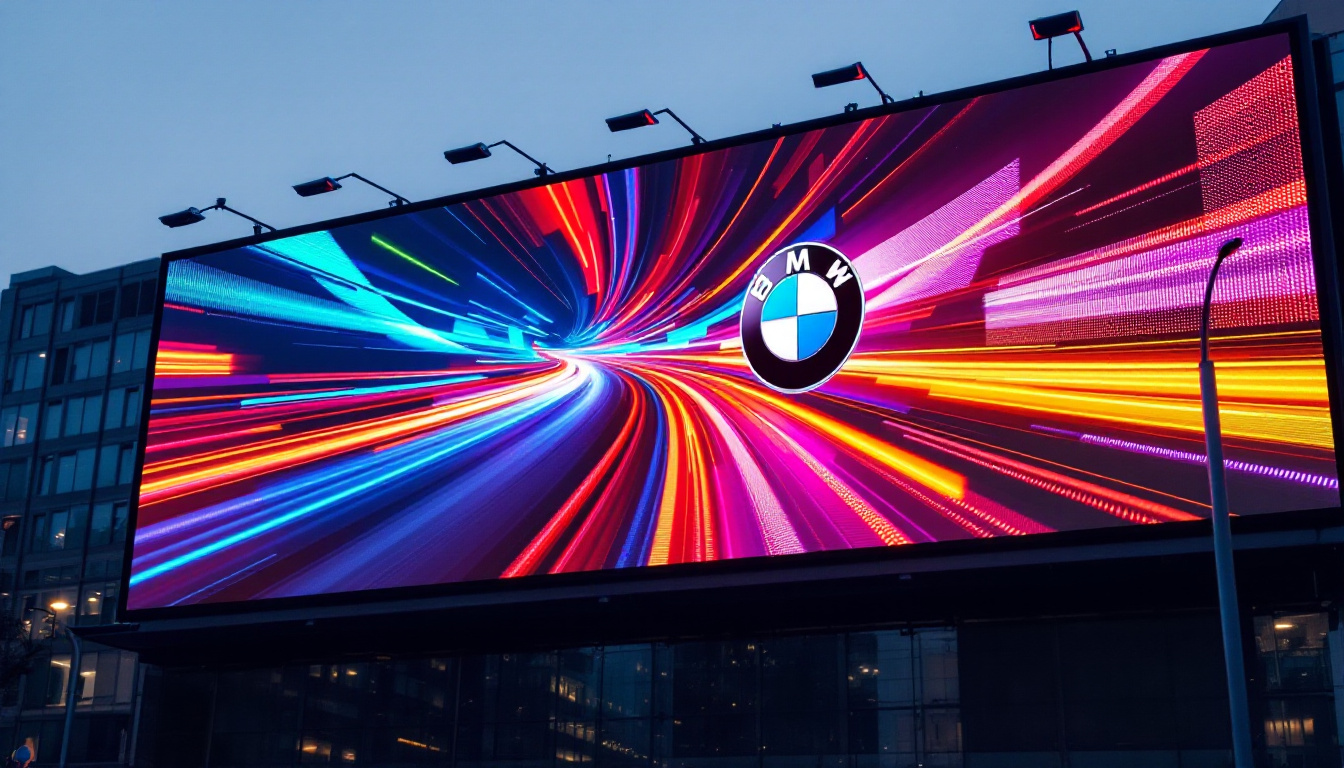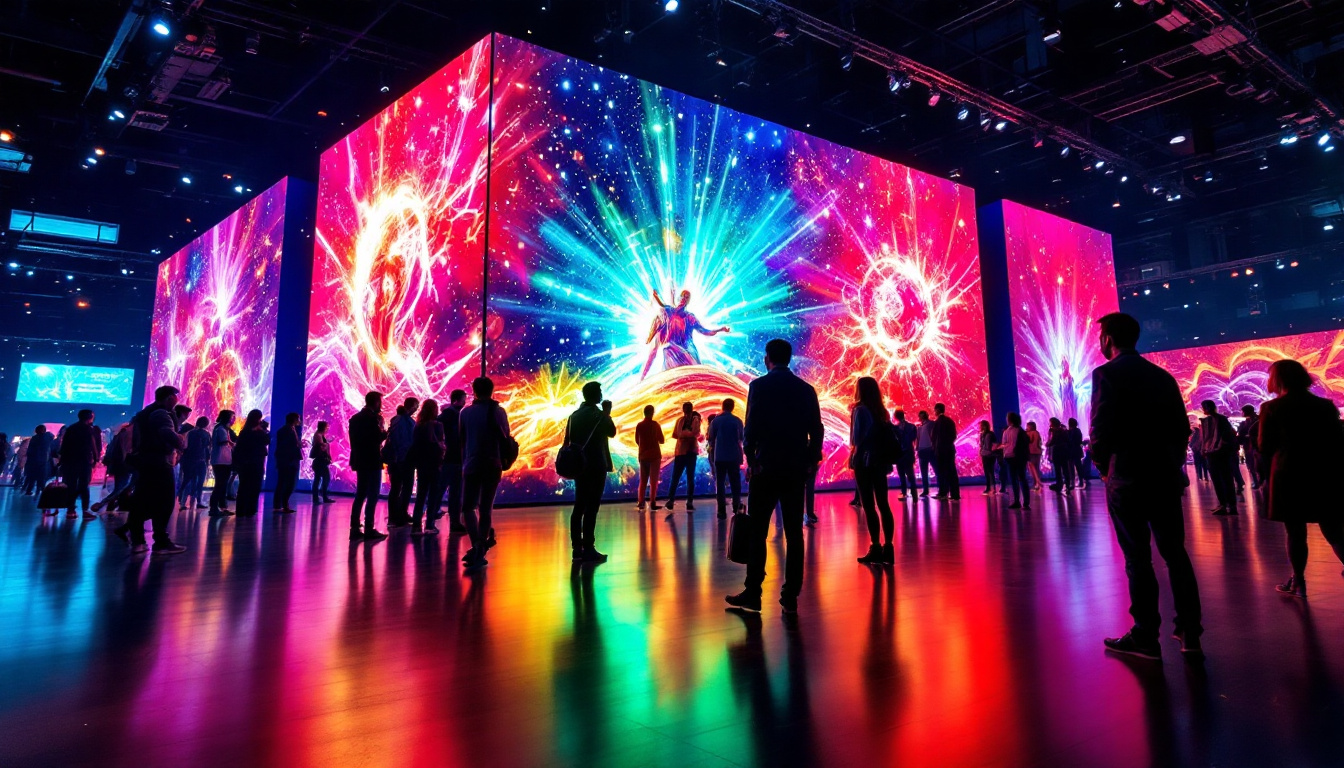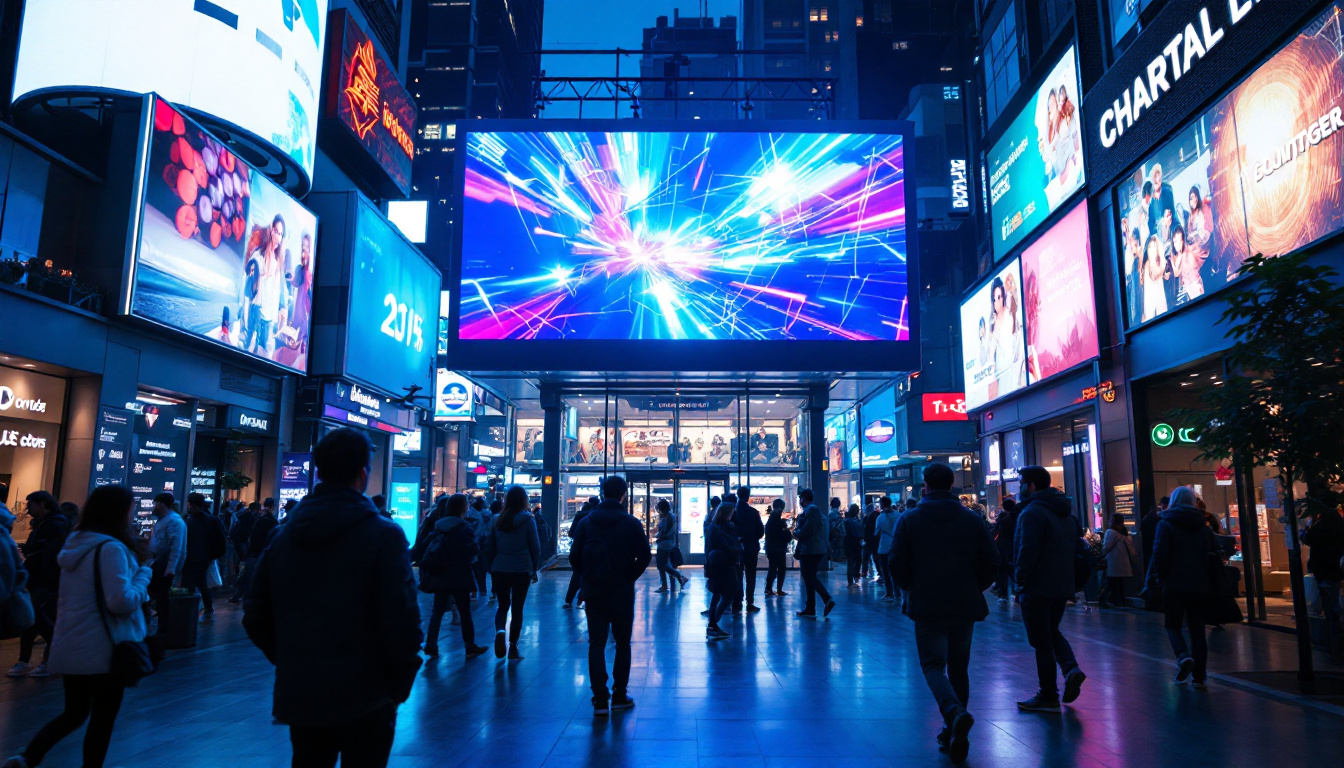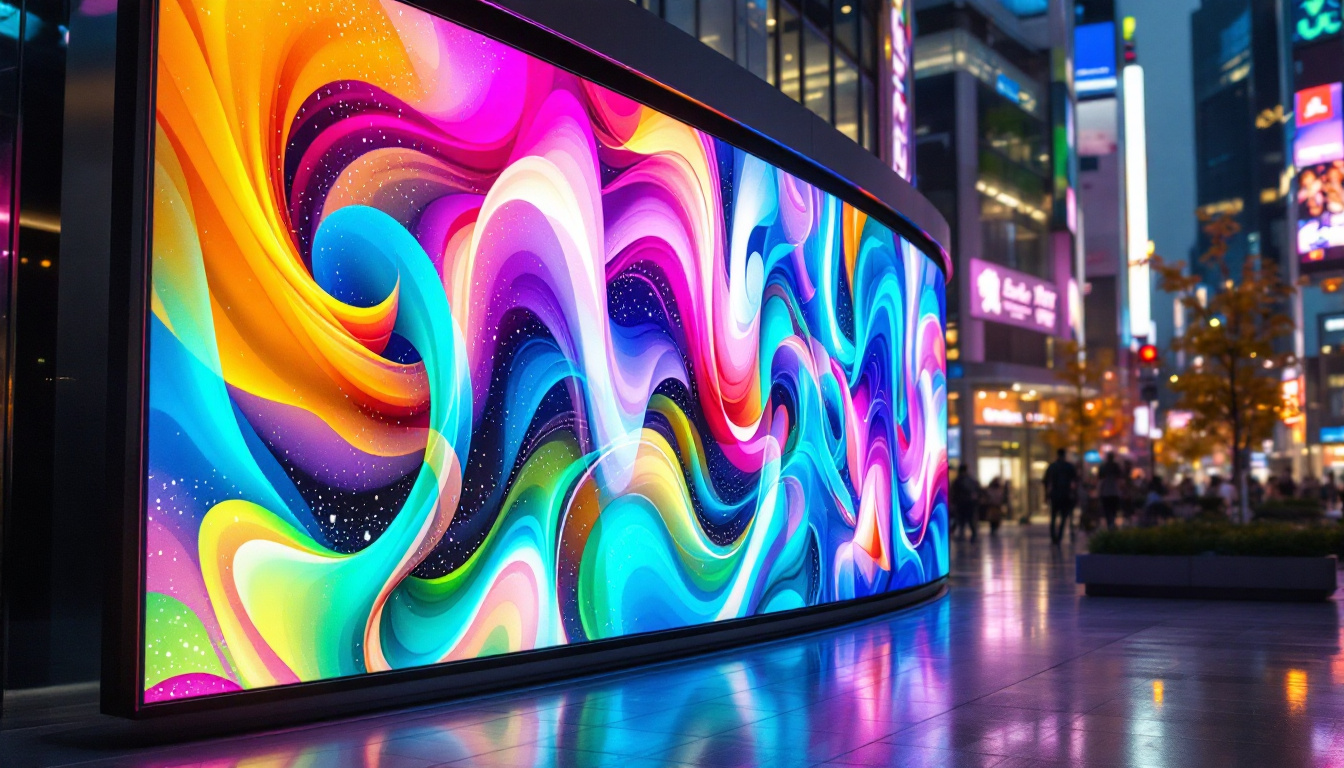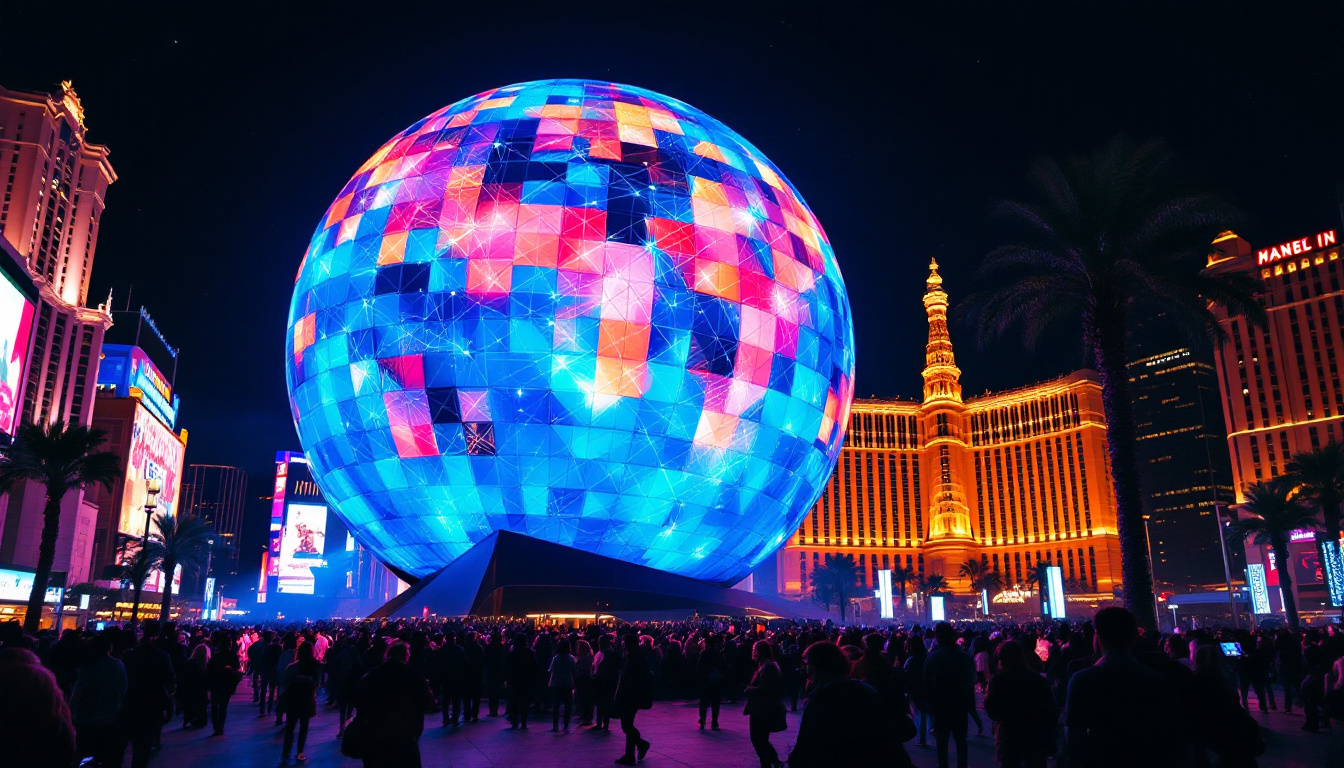In the realm of modern advertising and information dissemination, digital signage has emerged as a powerful tool. Among the various technologies employed, LCD (Liquid Crystal Display) and LED (Light Emitting Diode) displays are the most prevalent. This article delves into the intricacies of LCD digital signage and the role of LED displays within this context, offering insights into their functionalities, advantages, and applications.
Understanding LCD Digital Signage
LCD digital signage utilizes liquid crystal display technology to present visual content. This technology is characterized by its ability to produce sharp images and vibrant colors, making it an ideal choice for various environments, from retail spaces to corporate offices.
How LCD Works
At its core, an LCD screen consists of several layers, including a backlight, liquid crystal layer, and color filters. The backlight illuminates the liquid crystals, which manipulate light to create images. This process allows for high-resolution displays that can convey detailed graphics and text.
The arrangement of pixels in an LCD screen contributes significantly to image quality. Each pixel comprises sub-pixels in red, green, and blue, which combine to produce a full spectrum of colors. This capability makes LCD displays suitable for applications requiring precise color representation.
Additionally, LCD technology has evolved significantly, with advancements such as LED backlighting and higher refresh rates enhancing the overall viewing experience. LED backlighting not only improves brightness and contrast but also allows for thinner display designs, making them more aesthetically pleasing and easier to integrate into various environments. Furthermore, the introduction of high dynamic range (HDR) technology has enabled LCD screens to display a wider range of colors and luminance, further enriching the visual content presented on these displays.
Advantages of LCD Digital Signage
One of the primary benefits of LCD digital signage is its versatility. These displays can be used in various settings, including retail, transportation hubs, and educational institutions. Their ability to show dynamic content, such as videos and animations, enhances viewer engagement.
Moreover, LCD screens are known for their relatively low power consumption compared to older display technologies. This efficiency translates into cost savings over time, making them an appealing option for businesses looking to minimize operational expenses. In addition to energy savings, LCD digital signage can also be remotely managed and updated, allowing organizations to change their messaging quickly and efficiently without the need for physical alterations. This capability is particularly beneficial in fast-paced environments where timely information is crucial, such as airports or shopping malls, where promotions and announcements can be adjusted on-the-fly to meet the needs of the audience.
The Role of LED Displays in Digital Signage
While LCD technology is widely used, LED displays have gained significant traction in the digital signage market. These displays utilize light-emitting diodes to produce images and are often recognized for their brightness and visibility, even in outdoor environments. The evolution of LED technology has allowed for more innovative applications, transforming how businesses communicate with their customers and enhancing the overall visual experience in public spaces.
Differences Between LCD and LED
One of the main distinctions between LCD and LED displays lies in their construction. LED displays are essentially a type of LCD that uses LEDs as a backlight instead of traditional fluorescent lights. This change results in better contrast ratios and more vibrant colors. Moreover, LED technology allows for pixel-level illumination, which means that individual pixels can be turned on or off, creating deeper blacks and a wider color spectrum that enhances the viewing experience.
Additionally, LED displays can be made thinner and lighter than their LCD counterparts, facilitating easier installation and integration into various settings. This flexibility has made LED displays particularly popular for large-scale outdoor advertising and events. The modular design of many LED systems also allows for creative configurations, enabling businesses to create custom shapes and sizes that can fit unique spaces and design aesthetics.
Benefits of Using LED Displays
The brightness of LED displays is one of their most significant advantages. They can produce images that are visible in direct sunlight, making them ideal for outdoor applications such as billboards and signage at sports events. This visibility ensures that messages reach a broader audience, maximizing the impact of advertising campaigns. In addition to their brightness, LED displays also offer superior energy efficiency compared to traditional lighting methods, which can lead to substantial savings on electricity costs over time.
Furthermore, LED displays boast a longer lifespan compared to traditional LCD screens. This durability reduces maintenance costs and the frequency of replacements, making them a cost-effective solution in the long run. The robust nature of LED technology also means that these displays are less susceptible to damage from environmental factors, such as temperature fluctuations and humidity, making them suitable for a variety of climates. As a result, businesses can invest in LED displays with confidence, knowing they will provide reliable performance and vibrant visuals for years to come.
Applications of LCD and LED Digital Signage
Both LCD and LED digital signage find applications across various industries, each serving unique purposes that enhance communication and marketing strategies.
Retail Environments
In retail settings, digital signage plays a crucial role in attracting customers and promoting products. LCD displays are often used for in-store promotions, showcasing advertisements, and providing information about sales and special offers. Their ability to display high-quality images and videos helps create an immersive shopping experience. Retailers can leverage this technology to create engaging narratives around their products, utilizing vibrant visuals and animations that draw customers in and encourage them to explore more.
On the other hand, LED displays are frequently employed for outdoor advertising, where their brightness and visibility can capture the attention of passersby. Retailers often use LED screens to display dynamic content that can be updated in real-time, allowing for timely promotions and announcements. This adaptability is particularly beneficial during peak shopping seasons or special events, where retailers can quickly adjust their messaging to reflect current trends or inventory changes. Furthermore, the use of interactive LED displays can enhance customer engagement, allowing shoppers to interact with the content, thus creating a memorable experience that can lead to increased foot traffic and sales.
Transportation Hubs
Transportation hubs such as airports and train stations utilize digital signage to provide essential information to travelers. LCD displays are commonly found in waiting areas and ticketing counters, displaying schedules, flight information, and wayfinding assistance. These screens not only keep travelers informed but also reduce anxiety by providing real-time updates, ensuring that passengers are aware of any changes in their travel plans. Additionally, LCDs can be used to display advertisements for local businesses, providing travelers with information about dining and entertainment options available in the vicinity.
LED displays, meanwhile, are often installed in outdoor settings to inform passengers about arrivals and departures. Their bright and clear visuals ensure that crucial information is easily accessible, enhancing the overall travel experience. Beyond just schedules, LED signage can also be employed for safety announcements, emergency alerts, and even entertainment, such as displaying live news or weather updates. This multifunctionality ensures that travelers remain engaged and informed while they wait, ultimately improving the efficiency of the transportation hub and the satisfaction of its users. As technology advances, we can expect these displays to integrate more sophisticated features, such as facial recognition or AI-driven content personalization, to further enhance the travel experience.
Challenges and Considerations
Despite the numerous advantages of LCD and LED digital signage, there are challenges and considerations that businesses must keep in mind when implementing these technologies.
Cost Factors
While the initial investment in digital signage can be significant, especially for high-quality LED displays, the long-term benefits often justify the expense. Businesses must consider not only the upfront costs but also the potential return on investment through increased customer engagement and sales.
Moreover, ongoing maintenance and content management can add to the overall cost. Companies should factor in these expenses when planning their digital signage strategy to ensure sustainable implementation.
Content Management
Effective digital signage relies heavily on content management. Businesses must develop a strategy for creating, scheduling, and updating content to keep it relevant and engaging. This may require dedicated personnel or software solutions to streamline the process.
Additionally, the content must be tailored to the target audience and the specific environment. Engaging visuals, clear messaging, and timely updates are essential to maximizing the impact of digital signage.
Future Trends in Digital Signage
The digital signage landscape is continually evolving, driven by advancements in technology and changing consumer behaviors. Several trends are expected to shape the future of LCD and LED displays.
Integration with IoT
As the Internet of Things (IoT) continues to expand, the integration of digital signage with IoT devices is becoming more common. This integration allows for real-time data collection and analysis, enabling businesses to tailor their messaging based on customer behavior and preferences.
For example, smart displays can adjust content based on the time of day, weather conditions, or even the demographics of the audience in front of them. This level of personalization enhances the effectiveness of digital signage and improves customer engagement.
Enhanced Interactivity
Interactivity is another trend gaining traction in digital signage. Touchscreen displays and interactive kiosks allow customers to engage with content actively. This engagement can lead to a more memorable experience and increased brand loyalty.
Businesses are increasingly exploring augmented reality (AR) and virtual reality (VR) applications within digital signage. These technologies can create immersive experiences that captivate audiences and provide unique ways to showcase products and services.
Conclusion
LCD and LED digital signage are integral components of modern communication and marketing strategies. Each technology offers distinct advantages, making them suitable for various applications across industries. As businesses continue to embrace digital signage, understanding the nuances of LCD and LED displays will be essential for maximizing their potential.
By staying informed about the latest trends and challenges, organizations can effectively leverage digital signage to enhance customer engagement, improve information dissemination, and ultimately drive business success. The future of digital signage is bright, and those who adapt to these changes will undoubtedly reap the rewards.
Discover LumenMatrix’s Innovative LED Solutions
Ready to elevate your brand’s presence and captivate your audience with the most advanced LED display technology? Look no further than LumenMatrix. Our comprehensive range of solutions, including Indoor and Outdoor LED Wall Displays, Vehicle LED Displays, LED Poster Displays, LED Sports Displays, Floor LED Displays, Custom LED Displays, All-in-One LED Displays, and LED Transparent Displays, are designed to revolutionize visual communication and engagement. Check out LumenMatrix LED Display Solutions today and transform your digital signage into unforgettable visual experiences.











